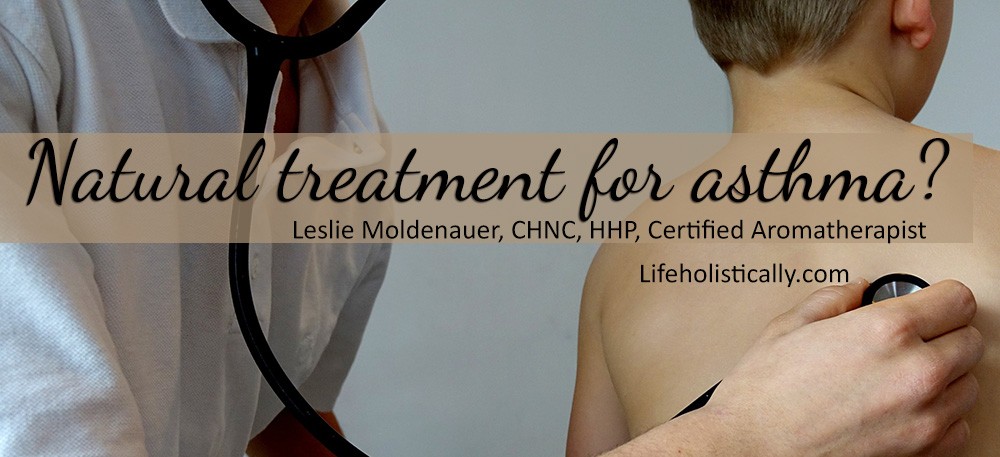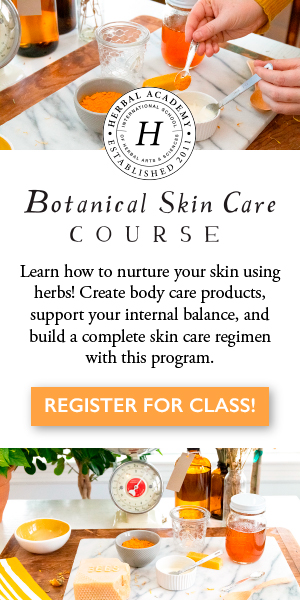Should we be using essential oils for asthma relief
Asthma is a chronic inflammatory disorder of the airways typified by wheezing, tightness in the chest, and difficulty breathing, sometimes warranting emergency medical care [1]
There has been a sharp rise in the cases of asthma over the past decade.
According to the Centers for Disease Control and Prevention (CDC):
“About one in 12 people in the U.S. has asthma, or about 25 million people. And the rate appears to be on the rise. From 2001 to 2011, the CDC says the number of Americans with asthma grew by 28 percent” [2].
Note: Sufferers know that an acute asthma attack can be a medical emergency. For this reason, use extreme caution when trying a DIY recipe at home. Never replace essential oils for your inhaler in an emergency situation. Consult your physician or go to an emergency room.
There are two main types of asthma, extrinsic is typically from external allergens, causing the production of IgE proteins, and the subsequent release of histamines causing restricted airways and the difficult breathing that follows [3].
The second is intrinsic, or having an internal cause. Dr. Francis Rackemann, an expert in asthma, stated that these individuals would not test positive for external allergens on the infamous skin prick test [3]. Intrinsic asthma could be exacerbated by a cold, flu, or other respiratory illness, for example.
Pinpointing and avoiding triggering factors can minimize asthma attacks, but those that suffer know that is not an easy task as those triggers constantly change and/or evolve. Nevertheless, if the trigger can be isolated and removed, that would be the ideal scenario.
It is always recommended to get allergy testing to determine what environmental or food allergies are present. An elimination diet can also be helpful to determine which foods the client is intolerant to as these do not always show up on an allergen skin prick test. Pollen and dust are big triggers, as are smoke, pet dander and other various chemical sensitivities such as artificial fragrance and yes, even essential oils.
There are other proposed causes of asthma attacks such as the overuse of antibiotics. The University of British Columbia found that those prescribed antibiotics before their first birthday were more than twice as likely as untreated children to develop asthma [4]. If these children had multiple courses of antibiotics, the incidences rose even higher. The theory behind this finding is excessive hygiene, reducing or removing beneficial bacteria from the gut, which causes the body and immune system to go into overdrive causing these allergic-type reactions. Read more details in the study referenced below [4].
Holistic Approach
For those that suffer from the extrinsic type, a removal of exposure to allergens is an important first step. Murray and Pizzorno state in their book, The Encyclopedia of Natural Medicine, those allergens can be viewed as straws on a camel’s back, and by adding enough straws to the camel’s back it eventually breaks [5].
*Placing quality air filters in the home is a great start. This is the one that I utilize, with great results. Here is another unit with great reviews for asthma and allergy sufferer.
*Those that have allergy-induced asthma knows that the home can be even more precarious than the outdoors. Bringing plants into the home is very beneficial. Follow this article that I wrote all about the best plants to do the job.
*Have you ever tried a pink Himalayan salt inhaler? Salt caves have been used for centuries to reduce respiratory ailments [6]. *Note, this unit is meant for salt only, do not add essential oils.
*A study published in 1996 by the Medical Journal of Australia, showed that children who ate fish (more than once a week) have one-third the asthma risk of those who did not consume it [7]. This is my preference for my children, as they will only eat moderate amounts of fish.
*Licorice (Glycyrrhiza glabra) is highly regarded as an anti-inflammatory and has antiallergenic properties [8]. Research to make sure this root is safe for your use.
*The gum resin of Frankincense (Boswellia serrata) also has antiallergenic effects. A double blind placebo study published in 1998 showed that individuals treated with the resin of Boswellia serrata showed a 70% reduction in bronchial asthma after a 6-week treatment period. The control group showed an improvement rate of only 27% [9].
Essential oils
Essential oils can also be of great benefit. The issue that I see on the Internet and social media are that the recommendations are not always based on science but on ‘sharing what worked for me’ scenarios. The problem here is an essential oil that helps one asthmatic may be the very essential oil that causes another’s attack so I do not recommend DIY’s at all to find relief. Peppermint and Eucalyptus are two such examples of what works for one is an issue for another.
Note: Always have your inhaler in hand when trying an essential oil to calm your symptoms. Steam tents have been shown to aggravate more than help, therefore, I would avoid this method of use.
On that note, I would like to share one piece of research on the subject. A study published in 2007 by the European Journal of Pharmacology, tested the constituent trans-Caryophyllene (as well as humulene) and showed that this component may help to help manage/treat inflammatory diseases such as asthma [10].
Which essential oils contain higher amounts of this constituent? Copaiba (Copaifera officinalis) and Black pepper (Piper nigrum). (Resources)
*Some of you may be having a light bulb moment. Can CBD oil help? Although CBD is not my area of expertise, I recommend reaching out to my colleague Kayla Fioravanti of Ology Essentials, who is.
Whether looking at supplements, herbs, or essential oils, I strongly advise you to continue taking medication for asthma, these things are not recommended as a replacement. Medications should never be abruptly stopped. Please reach out to your pediatrician, allergist/immunologist, or pulmonologist to discuss adding any of these recommendations to your wellness plan.


References
[1] Global Initiative for Asthma Management and Prevention (2018) https://ginasthma.org/
[2] Asthma and Allergies on the Rise in the U.S. https://www.healthline.com/health-news/children-allergies-and-asthma-on-the-rise-110813
[3] Bottrell, J. (2016) Extrinsic –vs- Intrinsic Asthma https://asthma.net/living/extrinsic-vs-intrinsic/
[4] Marra, F et al (2006) Does antibiotic exposure during infancy lead to the development of asthma?: a systematic review and metaanalysis. Chest journal https://journal.chestnet.org/article/S0012-3692(15)52261-7/fulltext
[5] Murray, M. T., & Pizzorno, J. E. (2014). The encyclopedia of natural medicine. London: Simon & Schuster.
[6] What is halotherapy? https://www.thesaltcove.com/about/#bio
[7] Salome, H. et al (1996) Consumption of oily fish and childhood asthma risk. The Medical Journal of Australia https://www.ncbi.nlm.nih.gov/pubmed/8628130
[8] Shin YW et al (2007) In vitro and in vivo antiallergic effects of Glycyrrhiza glabra and its components. Planta Medica https://www.ncbi.nlm.nih.gov/pubmed/17327992
[9] Wildfeuer, A. et al (1998) Effects of boswellic aciss extracted from a herbal medicine on the biosynthesis of leikotrines and the course of experimental autoimmune encephalomyelitis. Arzneimittel-Forschung. https://europepmc.org/abstract/med/9689425
[10] Fernandes, E et al (2007) Anti-inflammatory effects of compounds alpha-humulene and (−)-trans-caryophyllene isolated from the essential oil of Cordia verbenacea. https://www.sciencedirect.com/science/article/pii/S0014299907005419
Resources
Gertsch, J. et al (2008) Beta-caryophyllene is a dietary cannabinoid. https://www.ncbi.nlm.nih.gov/pmc/articles/PMC2449371/
Rogerio, A. (2009) Preventive and therapeutic anti‐inflammatory properties of the sesquiterpene α‐humulene in experimental airways allergic inflammation. https://bpspubs.onlinelibrary.wiley.com/doi/abs/10.1111/j.1476-5381.2009.00177.x
Like so many practices in life, I encourage you to become educated on the proper use of essential oils. When using them, please do so cautiously, understanding that there is often misinformation on the internet. You can be assured that I support only educated and proven resources. While essential oils should not be feared they should be respected and used properly to ensure the safety of the individuals using them.
Please note that I am not a medical practitioner. The content of this website is provided for general informational purposes only and is not intended as, nor should it be considered a substitute for, professional medical advice. Do not use the information on this website for diagnosing or treating any medical or health condition. If you have or suspect you have a medical problem, promptly contact your professional healthcare provider. By using this website, you assume full responsibility and liability for your own actions.
BEFORE YOU GO! Remember to sign up for my FREE Facebook group! Hang out with me and THOUSANDS of other Essential Oil lovers looking to learn, click on to join Real Essential Oil Education Group!
Check out my FREE offer below!




